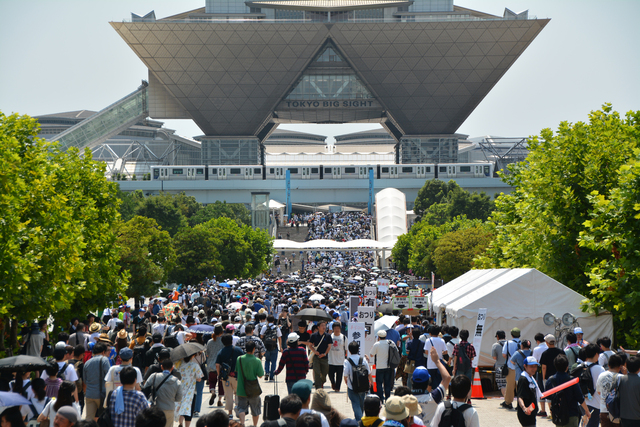なぜ日本人と欧米人は「否定疑問文」への答え方が違うのか(なぜにほんじんとおうべいじんは「ひていぎもんぶん」へのこたえかたがちがうのか)
小さな文化の差が、大きな誤解を生む
国際コミュニケーションで最も見落とされやすい問題のひとつが、否定疑問文に対する返答の仕方です。
- 「行かないんですか?」
- 「コーヒー好きじゃないんですか?」
こうした否定形の質問に対して、日本人と欧米人はまったく異なるロジックで“Yes/No”を使います。
欧米人:自分の意見・事実に“Yes/No”を使う
英語圏の人は、質問文の形に関わらず、自分の感情・事実にもとづいて“Yes/No”を選びます。
たとえば、 “Don’t you like coffee?” (コーヒー好きじゃないの?)
- 好きなら → Yes, I do. (はい、好きです)
- 好きでなければ → No, I don’t. (いえ、好きではありません)
つまり、
- Yes = 自分の意見に賛成
- No = 自分の意見に反対
質問が否定文であっても、それには左右されません。
日本人:質問文が正しいかどうかで「はい/いいえ」を決める
一方で日本語では、返事が文の内容そのものに結びつきます。
「コーヒー好きじゃないんですか?」の場合:
- 好きなら → いいえ、好きです。 (=あなたの言った“好きじゃない”は正しくありません)
- 好きでなければ → はい、好きじゃないです。 (=あなたの言った内容が正しいです)
日本語の
- “はい”は「あなたの言ったことは正しい」
- “いいえ”は「正しくない」
という意味で返すのです。
この違いが生む、実際の誤解
ビジネスの場面では、次のような誤解が起きがちです。
- 日本人の「はい」を、欧米人が“同意”と誤解
- 欧米人の「いいえ」を、日本人が“否定文は間違い”と受け取る
- 細かなニュアンスのズレが、結論や契約条件に影響することも。
相手の文化を知らないと、本来合意している内容でも食い違って聞こえてしまいます。
解決策:肯定疑問文で確認する
国際的な場では、否定疑問文を避けて肯定文で聞くことが最も安全です。
×「行かないんですか?」
○「行きますか?」
この小さな配慮だけで、コミュニケーションが格段にスムーズになります。
否定疑問文の違いはごく小さな文化差ですが、実際には大きな誤解を生む重要なポイントです。日本語と英語の思考の違いを理解することで、国際コミュニケーションはもっと正確で、ストレスの少ないものになります。
ご意見・ご感想もぜひお寄せください。
Why Japanese and Western Responses to "Negative Questions" Differ
A Small Cultural Difference That Leads to Big Misunderstandings
One of the most common issues in international communication is how people respond to negative questions. Questions like:
- Don’t you want to go?
- Don't you like coffee?
When answering these types of questions, Japanese and Western speakers answer in completely different ways.
Western Reply: Yes/No Reflects Your Opinion/Fact
English speakers reply with yes or no based on whether they’re affirming or denying the statement.
For example, for the question: "Don’t you like coffee?"
- If you do like coffee → Yes, I do.
- If you don’t like coffee →No, I don't.
In short:
- Yes = I agree with my own opinion.
- No = I disagree.
The negative form of the question doesn’t affect their choice of yes or no.
Japanese Reply: “Yes/No” is based on whether the question’s statement is correct
In contrast, the Japanese response is tied directly to whether the statement within the question is correct.
For the question: "コーヒー好きじゃないんですか?" (Don't you like coffee?)
- If you do like it → いいえ (No)、好きです。(No, what you said isn’t correct.)
- If you don’t like it → はい (Yes)、好きじゃないです。(Yes, what you said is correct.)
In Japanese:
- はい (Hai) means: Your question/statement is correct.
- いいえ (Iie) means: Your question/statement is incorrect.
How This Causes Misunderstandings
In a business setting, these misunderstandings often arise:
- Westerners can misunderstand “Hai” from a Japanese person as an agreement to the negative statement.
- Japanese people can misunderstand a Western “No” as a disagreement to the negative statement.
These small nuances can even affect decisions or contract discussions.
The Solution: Confirm with a Positive Question
To avoid confusion in international settings, use positive rather than negative questions to be safe.
× “Don’t you want to go?”
○ “Do you want to go?”
This small consideration will make your communication significantly smoother and clearer.
Understanding how negative questions work differently in Japanese and English can help prevent unnecessary misunderstandings and make cross-cultural communication far less stressful.
We’d love to hear your thoughts and feedback!
sign up for the Japanese-Online Newsletter
__..-・**・-..__..-・**・-.._ あいうえお かきくけこ さしすせそ たちつてと なにぬねの はひふへほ まみむめも やいゆえよ らりるれろ わゐうゑを ん __..-・**・-..__..-・**・-.._
#JapaneseOnline #LearningJapanese #FreeJapaneseLessons #JapaneseVideoLearning #JapaneseAnime #Anime #JapaneseFood #Bloguru










